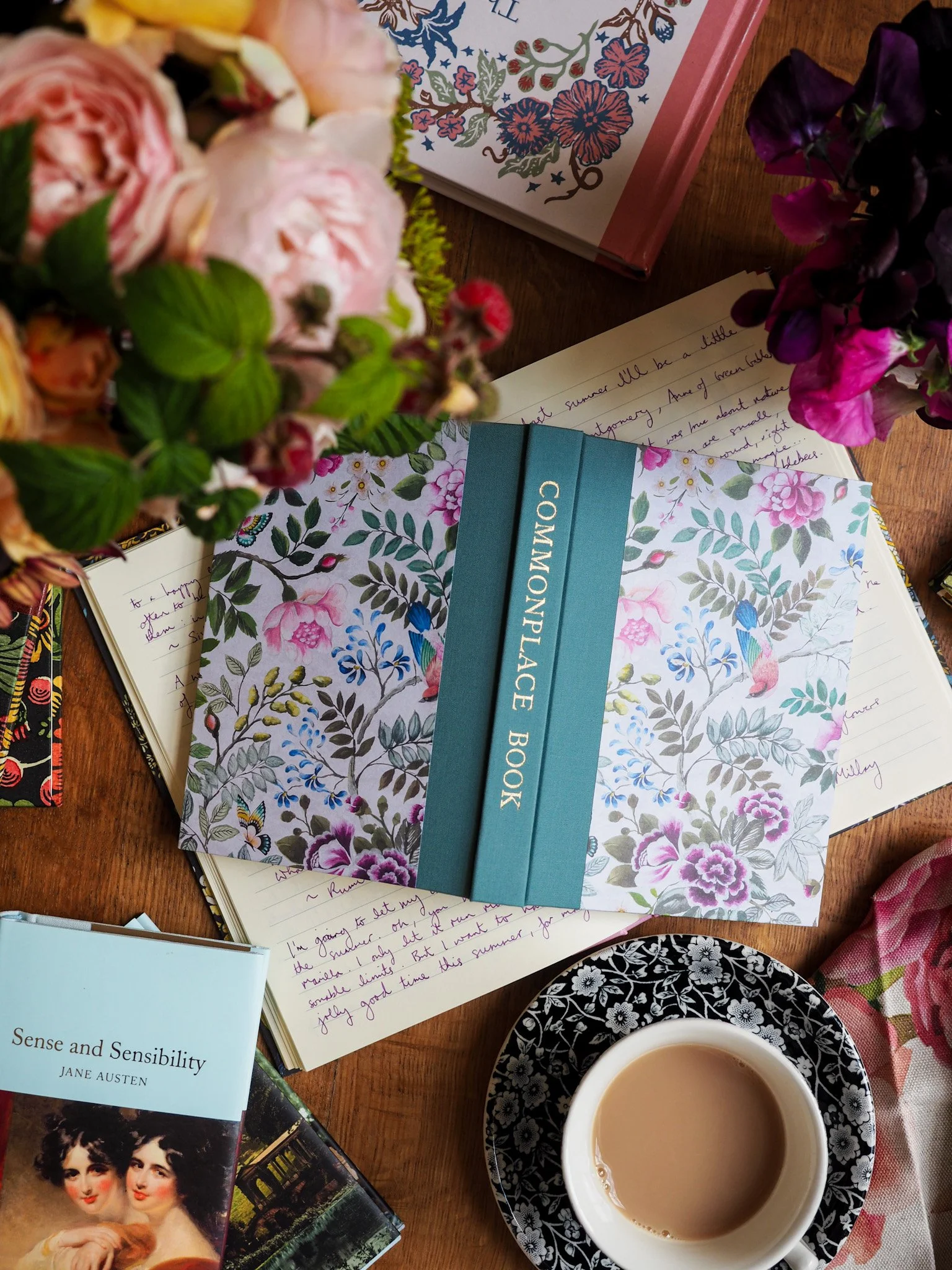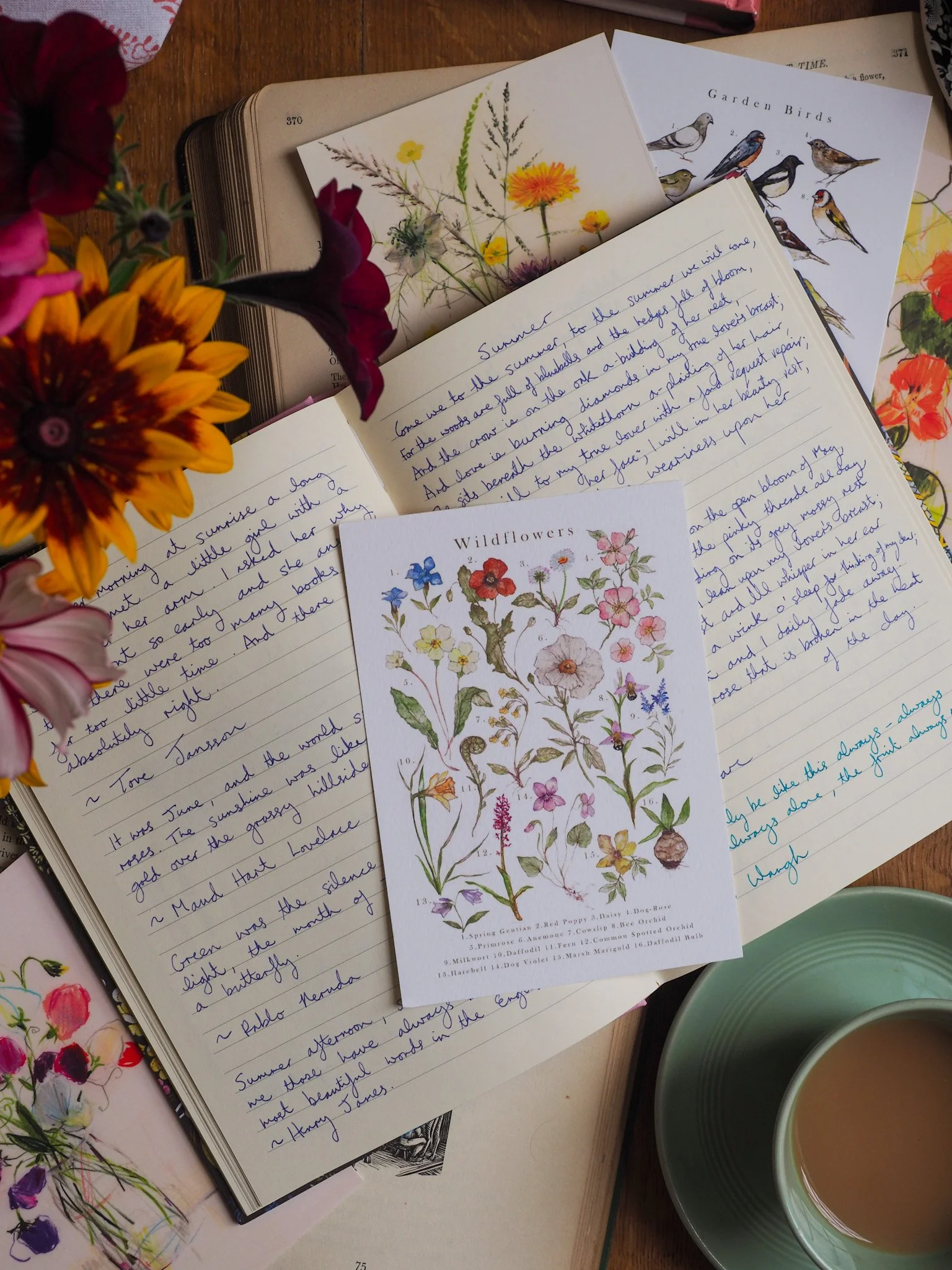How to Start a Commonplace Book
Let us take down one of those old notebooks which we have all, at one time or another, had a passion for beginning…. Here we have written down the names of great writers in their order of merit; here we have copied out fine passages from the classics; here are lists of books to be read; and here, most interesting of all, lists of books that have actually been read, as the reader testifies with some youthful vanity by a dash of red ink. — Virginia Woolf, from ‘Hours in a Library’
What is a Commonplace Book?
A commonplace book is a collection of quotes, poetry, recipes, lists and observations that are meaningful to you. Many great thinkers have kept commonplace books over the centuries, including John Milton, Samuel Taylor Coleridge, Lewis Carroll, George Eliot and Virginia Woolf.
In a world saturated with fleeting digital content, I find that keeping a physical commonplace book provides a calming escape. My commonplace book acts as a space that holds words and ideas that matter to me; it’s a notebook I love to return to again and again.
Creating such a deeply personal anthology is a life-enhancing habit, as well as a satisfying creative process. The act of choosing and copying out entries deepens your appreciation of language, fosters thoughtful reflection and cultivates creativity.
As such, a commonplace book is an important literary companion for readers, writers and creatives.
How to Start Your Commonplace Book:
There is no wrong way to keep a commonplace book, which is a large part of the fun. Commonplacing is an individual practice, and I encourage you to keep a commonplace book in whatever form most appeals to you.
Start with a format that draws you to write: this might be a beautifully bound journal with thick pages, a spiral notebook you won’t mind scribbling in, or a digital tool that syncs across devices. What matters most is that the medium suits your habits and encourages you to return to it.
I must admit that I find great pleasure in the sensory delights that a physical notebook paired with a fountain pen can provide. Choosing to handwrite rather than type means I’m naturally compelled to slow down and pay closer attention to each word I’m writing. This slower, more deliberate practice helps me internalize the beautiful lines and ideas I’m copying out far more deeply.
However, when it comes to capturing quotes quickly and efficiently, modern technology offers many practical advantages. I often use my phone to take a photo of a page from a book I’m currently reading, or I might screenshot a particularly striking quote shared on social media. Then, at some point during the week, I’ll spend a quiet ten minutes transferring these quotes into my journal.
There is no standard structure for a commonplace book. Some people divide their notebooks into broad topics (such as philosophy, literature and nature), while others prefer to let the entries flow chronologically. You could opt to date your entries, create a flexible indexing system or embrace a more spontaneous approach. Whatever suits you best!
You may even wish to devote one commonplace book to a single topic, just as I have done for The Country Commonplace Book, which celebrates nature and country living through every season of the year.
Adding Visual Interest to Your Commonplace Book:
Adding a decorative element to your commonplace book may also appeal to you: sketches of scenes you’d like to remember; drawings inspired by the books you’ve read; floral borders around a favourite nature poems, or perhaps some pressed flowers slipped between the pages.
If you're artistically inclined, your commonplace book can become part sketchbook, allowing your literary and visual expression to evolve together. In the days before smart phones and cameras were ubiquitous, people would often sketch a landscape they wished to remember into their commonplace book. Taking the time to draw further encourages you to slow down and focus your attention.
If (like me) you’re not gifted at drawing, you may enjoy selecting beautiful postcards to illustrate your commonplace book. I stick them into my notebook using washi tape or adhesive photo corners.
In digital commonplace books, visuals can be added just as effectively. You can insert photographs, scanned artwork, or digital illustrations. Some apps even allow for handwritten annotations or sketches directly onto the screen, combining the best of both analog and digital worlds.
Consider creating visual ‘covers’ or dividers for different themes or moods, or curating a folder of inspiring images to use alongside your text.
Ultimately, incorporating visual elements turns your commonplace book into a more layered and personal archive. When you revisit your book over the years, these visuals (alongside your written quotes) may reignite memories and feelings, offering a fuller picture of who you were and what you loved at a particular moment in time.
Commonplace Book Resources:
You don’t need a fancy notebook to start a commonplace book, but for those who adore beautiful stationery as much as I do, then I recommend the beautiful notebooks made by Ursula Jeakins of Starsmead Bookbinders. Available with plain or lined pages, these notebooks have ‘Commonplace Book’ stamped along the spine and feature beautiful covers.
Other notebooks I love are by Choosing Keeping and Kensington Paperie, which both use gorgeous papers to make their covers.
In terms of fountain pens, I have a range of Kaweco Classic Sport pens in different colours to match the seasons. I really enjoy writing with these pens, which are light to handle and offer different sized nibs (I like a very thin nib).
As mentioned previously, I like to use washi tape to stick down postcards into my commonplace book. I often use plain colours, but this washi tape by Polly Fern (one of my favourite artists) is particularly pretty.
If you intend to keep a digital commonplace book, then Notion, MyMind and Evernote are useful note-taking apps to know about.
Finally, my book - The Country Commonplace Book - is (if I do say so myself!) a lovely collection of beautiful poems, evocative prose, carefully curated book lists and delicious recipes that I hope would inspire you with plenty of possibility to start you off on your commonplacing journey.
If you decide to keep a commonplace book, I trust it will become a treasured source of inspiration and wisdom for you.






